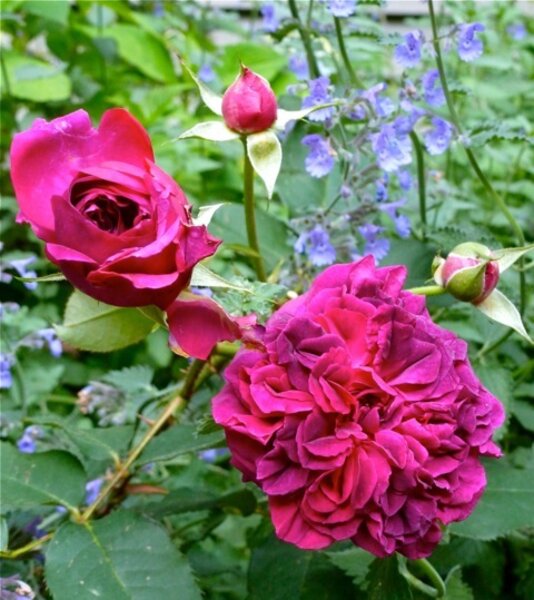Grow the roses that starred in Queen Elizabeth's Jubilee celebration
Loading...
The Queen of Flowers played a glamorous role during Queen Elizabeth’s recent Diamond Jubilee celebration.
As part of the festivities, the queen’s royal barge was escorted down the Thames by a seven-mile flotilla of more than 1,000 boats, including 40 of the “little ships” that were used in the legendary evacuation of Dunkirk. It was the largest river pageant in 350 years.
Flowers from the queen’s gardens and her 16 Commonwealth realms decorated the royal barge, including English roses, Irish shamrocks, thistles from Scotland, Welsh daffodils, wattles from Australia, silver ferns from New Zealand, and Canadian maple leaves.
A 'floating botanical garden'
A traditional knot garden was also planted onboard the barge.
Rachel de Thame of BBC Gardener’s World created the floral designs in the royal color scheme of red, gold and purple. She used the queen’s 1953 coronation gown with its intricate floral embroidery as an inspiration.
Renowned florist Kitty Arden spent six months planning for the garlands that would festoon the barge. Her preparations, carried out along with 18-time Chelsea Flower Show gold medal winner Mark Fane, included several dry runs to assure that the flowers remained fresh and secure in case the royal party encountered rain or heavy winds. The flowers stayed put and remained vibrant for three days.
In all, more than 7,000 cut flowers, 140 plants, and 90 floral garlands (approximately six feet in length) turned the Spirit of Chartwell into a floating botanical garden.
And no flowers were more impressive or fragrant than the 2,700 cut flowers and 60 rose bushes supplied by David Austin English Roses.
According to Michael Marriott, David Austin’s technical director, the roses for the swags included 1,800 raspberry-red Darcey Bussell blooms and 900 blossoms of creamy-white Patience.
To mesh with the color scheme, 60 bushes of Darcey Bussell and the crimson-to-magenta Munstead Wood [see photo at left] were placed in a bed in front of the queen. Munstead Wood has won international awards for its fruity, Old World fragrance -- its delectable perfume delighted members of the royal party and onlookers alike.
Long days of preparation
To get the rose bushes looking their best, the Austin team forced them in a greenhouse usually reserved for their Chelsea Flower Show display.
For the cut flowers, they sent two of their expert florists to London to look after them in a building right by the Thames. For three days before the event, they turned them and gently made sure they were exactly at the right stage for the special day.
The result was a smashing success and a feast for the senses. The perfect outcome for a celebration fit for a queen.
-----
Lynn Hunt, the Rose Whisperer, is one of more than a dozen expert gardeners who blog regularly at Diggin' It. She's an accredited horticultural judge and a Consulting Rosarian Emeritus for the American Rose Society. She has won dozens of awards for her writing in newspapers, magazines, and television. After a recent move, she grows roses and other plants in her garden in the mountains of western North Carolina.. To read more by Lynn, click here.You can also follow her on Twitter and read her Dirt Diaries.







